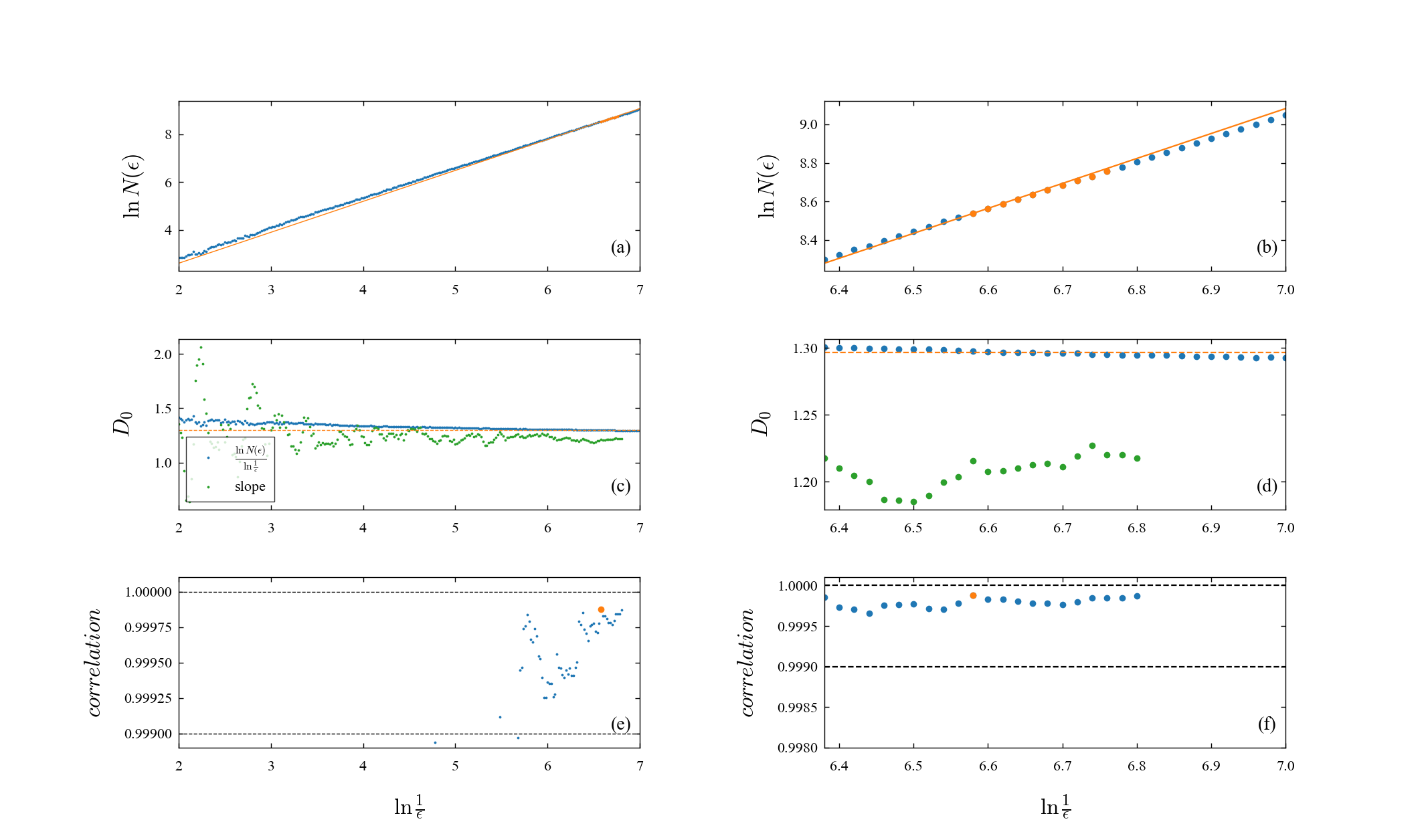So far I managed to obtain:
from hundun.exploration import calc_dimension_correlation, calc_dimension_information, calc_dimension_capacity
from hundun.equations import Lorenz
u_seq = Lorenz.get_u_seq(20000)
D_0 = calc_dimension_capacity(u_seq, depsilon=0.02, base=7, loop=250, min_correlation=0.999, scale_down=True, batch_ave=10, plot=True, path_save_plot='./capacity.png')
print('D_0=',D_0) # capacity dimension
D_1 = calc_dimension_information(u_seq, depsilon=0.02, base=7, loop=250, min_correlation=0.999, scale_down=True, batch_ave=10, plot=True, path_save_plot='./information.png')
print('D_1=',D_1) # information dimension
D_2 = calc_dimension_correlation(u_seq, depsilon=0.02, base=7, loop=250, min_correlation=0.999, scale_down=True, batch_ave=10, plot=True, path_save_plot='./correlation.png')
print('D_2=',D_2) # correlation dimensionD_0= 1.9669881090760062
D_1= 1.9044696394480827
D_2= 2.0757415161772044Questions: Is the value of 20000 the final time or the number of steps? How do we know the time series is long enough? How can we know that the value we obtain is realistic when I have no reference value?
Thanks for your time, Ricardo
 )
)
Hi,
I'd like to extend my gratitude for developing such a library. I've chosen to raise a topic in the issues section, anticipating that others may also find it relevant. I aim to utilize your package to calculate the correlation dimension of various dynamical systems. However, to have confidence in the outcomes, I need to be able to replicate the commonly referenced dimension value of d=2.05±0.01 for the Lorenz attractor with (sigma, rho, beta)=(10, 28, 8/3). Ideally, my goal is to generate a figure akin to the one attached. I find it perplexing that most packages, despite claims of this capability, seldom demonstrate this value in their documentation or examples. Could you provide any guidance or examples that successfully achieve this benchmark?
Thanks for your time, Ricardo